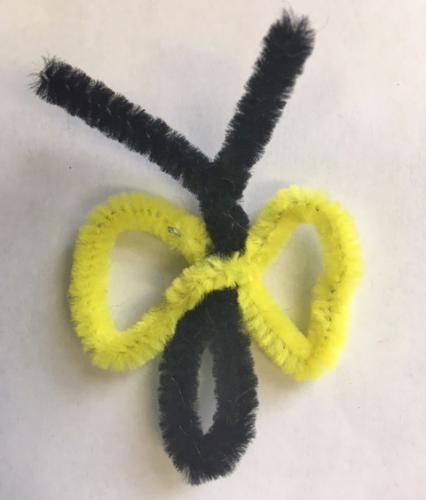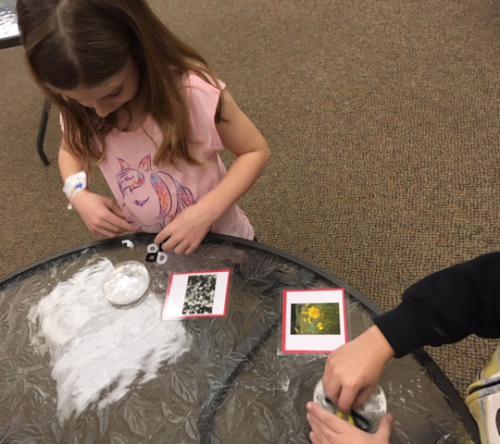Exploring pollinators with youth
Using this activity to explore what pollinators do and why they are important is one way to engage youth in Science, Technology, Engineering and Mathematics (STEM).

What do pollinators do? Why are they important to people? Michigan State University Extension is helping increase environmental science literacy across Michigan. One way we support an increased interest in our environment is to provide information and ideas for engaging youth in exploring their world. Adults can help youth increase their environmental science literacy by encouraging them to ask questions and discover answers. Exploring what pollinators do and why they are important is one way to engage youth in STEM (Science, Technology, Engineering and Mathematics).
Before engaging youth, gather the necessary materials:
- Flower pictures (at least one picture for each youth)
- Small dishes/plates (one for every two youth)
- ½ teaspoon of flour or talcum powder per dish/plate
- 1 chenille stem per youth
 Place the dishes of flour evenly around a table. Cut the chenille stem in half and twist together, using one to form wings and the other to form a body with antenna (see photos). If time allows and youth are old enough, have each youth make their own pollinator.
Place the dishes of flour evenly around a table. Cut the chenille stem in half and twist together, using one to form wings and the other to form a body with antenna (see photos). If time allows and youth are old enough, have each youth make their own pollinator.
Begin engaging youth in discussing pollinators by asking the youth to give you some examples of pollinators (beetles, bees, butterflies, other insects, birds and in some areas bats). What makes an animal a pollinator? Help youth explore the role of pollinators by explaining that many pollinators get their food from flowers by feeding on the nectar flowers produce. As the pollinator gathers the nectar, it brushes against the flower and gets pollen on itself. As it moves from flower to flower eating nectar, it mixes the pollen from one flower to another.
 Have youth explore this by each selecting a flower picture and placing next to or in-between the dishes of flour around the table. Next, ask them to take their chenille stem pollinator and stand at their flower around the table. Demonstrate how a pollinator would settle on the flower (dish of flour next to a flower) and come away with pollen (flour) after drinking the nectar. The pollinator would then fly to the next flower moving around the table, drinking nectar for each flower and mixing the pollen from flower to flower.
Have youth explore this by each selecting a flower picture and placing next to or in-between the dishes of flour around the table. Next, ask them to take their chenille stem pollinator and stand at their flower around the table. Demonstrate how a pollinator would settle on the flower (dish of flour next to a flower) and come away with pollen (flour) after drinking the nectar. The pollinator would then fly to the next flower moving around the table, drinking nectar for each flower and mixing the pollen from flower to flower.
When youth have finished visiting all the flowers, ask them if they think pollinators are important. Why are pollinators important? What would happen if all the pollinators disappeared? Help youth understand that pollinators play a vital role in food production. Pollinated flowers develop into the fruits and vegetables we like to eat.
For more ideas about exploring pollinators with youth, read “Students find winter is a perfect time to prepare for spring pollinator garden projects.”
MSU Extension and the Michigan 4-H Youth Development program help to create a community excited about STEM (Science, Technology, Engineering, and Mathematics). 4-H STEM programming seeks to increase science literacy, introducing youth to the experiential learning process that helps them to build problem-solving, critical-thinking and decision-making skills. Youth who participate in 4-H STEM are better equipped with critical life skills necessary for future success.
To learn more about the positive impact of Michigan 4-H youth in STEM literacy programs, read our 2016 Impact Report: “Building Science Literacy and Future STEM Professionals.”
To learn more about MSU Extension, visit the MSU Extension website. To learn more about 4-H and Extension opportunities in Alcona County, stop by our Harrisville office at 320 S. State St. Harrisville, MI 48740, or visit us online at our Alcona County MSU Extension Facebook page or Alcona County Extension office page.



 Print
Print Email
Email




